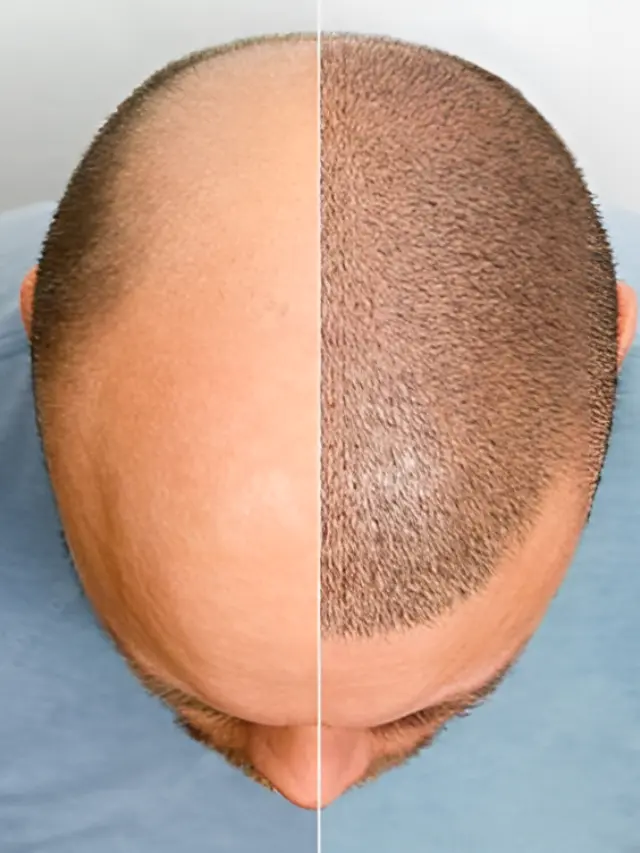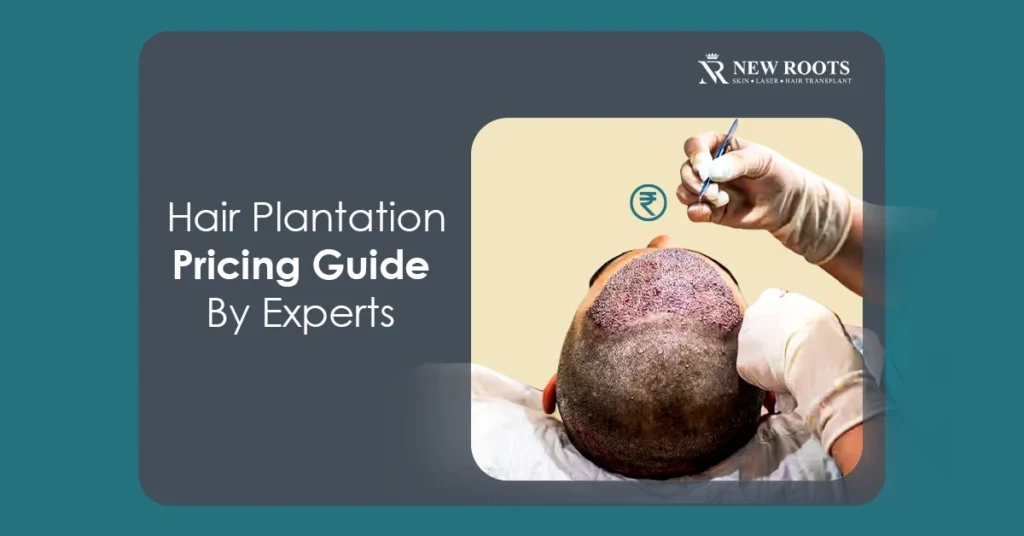Introduction
This is among the most noteworthy problems for men today because it negatively affects their appearance and self-confidence. Thus, knowing who can be considered an Ideal Candidate for Male Hair Transplant is very important to meaningfully lower the chances of such problems.
The purpose of this paper is to discuss the multitude of factors that influence who is an appropriate candidate for hair transplantation and locate available solutions that naturally restore hair.
Table of Contents
Understanding Hair Loss
Hair loss is due to genetics, hormones, and lifestyles. By age 50, 30 to 50 per cent of men will have balding patterns visible, a reason alone why some would be entitled to hair-thinning treatment. Hair transplants are one sure-fire option for men because they make them young again and give them that confidence back.
Criteria for a Good Candidate for Hair Transplant Surgery
Men and women from all backgrounds can be good candidates for hair transplants. Success depends on two key factors: having enough healthy hair on the scalp to transplant and the ability of the thinning area to support new hair growth. Both these conditions are essential for a successful and natural-looking result.
A good dermatologist will take a scalp examination to assess candidacy properly. That can include drawing any blood tests that may be needed for underlying conditions that may occur with the loss of hair, or even a biopsy of the scalp to monitor the health status of a hair follicle.
Ideal candidates would include those patients who have severe hair loss, with a dense donor area that is clinically healthy in terms of hair, scalp, and overall health.
Ideal candidates should also possess realistic expectations regarding the outcome of the procedure. Color, texture, waviness, and curliness of the hairs may all be other factors that influence the eventual result.
Hence, a blend of several hair transplantation techniques may be utilized to achieve an optimal outcome to restore the shine of a patient. Open communications therefore exist between the patient and the surgeon as they share expectations beforehand.
Techniques in hair transplantation primarily work on the existing hair of the patient on his scalp. The treatment for hair loss should be taken as a serious solution rather than a minor fix for the ongoing problems of hair loss.
Also, candidates should be informed of the phase commonly referred to as “shock loss,” which typically happens after surgery in weeks due to trauma imposed on the scalp by this treatment.
It is a recovery phase and thus should not become an issue at all because, with proper care and observation, the transferred hair will grow back permanently to counter hair loss.
Ideal Candidate for Male Hair Transplant Requirement
Ideally, those who ought to seek a male hair transplant should possess similarities to Ideal Candidate for Male Hair Transplants as followers :
Age: Most candidates are over 25, as younger individuals may still experience ongoing pattern baldness, making it difficult to gauge hair loss progression accurately.
Stable Hair Loss: There should be a defined pattern of hair loss classified using the Norwood Scale. This determines an appropriate classification for either extent of baldness and prognosis for future hair loss.
Adequate Donor Hair: The patient must have sound hair follicles in the donor area, primarily at the posterior or lateral aspects of the scalp.
It is indeed crucial to have an adequate donor supply to achieve satisfactory results with a hair transplant. Ideal candidates should, therefore, also have realistic expectations.
A transplant can restore hair to its normal state, having stronger hair, but it doesn’t usually restore a full head of hair.
General Health: He ought to be healthy. Diseases or drugs might make it harder to carry out the process.
Factors to Consider for Hair Transplant Surgery
👉 Overall Condition
It commences with an all-inclusive health evaluation for qualification.
Patients suffering from chronic diseases and mental conditions may have their outcomes from the procedure affected.
👉 Hair Loss Pattern:
Androgenetic Alopecia Determine if hair loss is patterned, or according to the male or female pattern baldness.
👉 Stability:
Ensure that a stable pattern of hair loss is established; emphasize especially on DHT sensitive areas.
Dermatological Consultation: Dermatological examination, and checkup with a dermatologist for stability of hair loss; follow-up may be necessary sometimes.
👉 Mental Health Problems:
Stress, anxiety disorders, and obsessive-compulsive disorder can thereby affect the recovery process and hair growth.
Effective management of mental health has to come first before hair transplantation.
👉 Scalp Health:
Chronic diseases such as psoriasis, lupus, or eczema may exclude patients from surgery.
All scalp conditions need to be treated accordingly before a hair transplant.
Patients with alopecia areata in addition to pattern loss should be referred elsewhere.
👉 Fertilization in Females:
A hair transplant would be done only if the risk of surgery was not imminent to the mother and her infant.
In case she is pregnant, then complications may arise.
👉 Diabetes:
These patients are soft targets as they may become vulnerable to complications during their blood coagulation and healing of wounds.
It involves keeping the blood sugar stable and professional medical advice about safety evaluation.
👉 Anesthesia Allergies:
Allergies to anesthetics can also exclude candidacy for hair transplantation.
Any adverse reaction to anesthesia being disclosed will ensure safe administration during the procedure.
A Synopsis of Hair Transplantation Techniques
For anyone contemplating the hair transplant procedure, knowledge of it is of great importance. Here is a breakdown of the two most popular surgical methods:
Method |
Description |
|---|---|
|
FUE Hair Transplant
|
This method consists of moving single hair follicles to locations where there is thinning. This procedure is minimally intrusive, has less scarring, and provides a stress-free healing trajectory. |
|
FUT Hair Transplant
|
FUT consists of taking a ribbon of scalp from the back of the head, from which hair follicles are removed. The outcome of this technique produces a linear mark but is effective for transplants over large areas. |
Both methods highlight the importance of preserving graft survival and seeing to it that the hair follicles remain viable for a long time.
How To Prepare For A Hair Transplant Surgery
Follow Surgeon’s Instructions
Follow carefully every piece of advice that your surgeon sends you, such as dietary restrictions, quitting smoking, and changes in your medications.
Quit Smoking
Avoid smoking a week or two before the surgery as smoking would prevent blood flow; thus healing will be interfered with.
Know the Surgery Location
Be aware of where the surgery will take place to be able to plan your logistics and transport on the day of the procedure effectively.
Avoid NSAIDs and Supplements
One should avoid NSAIDs and herbal supplements that are likely to enhance one’s risk of bleeding at least the week preceding the operation.
Outline the anticoagulants.
To these prescription anticoagulants, a patient will have to inform his surgeon because they might have to be withheld temporarily before surgery.
Apply topical treatment
Seven days before surgery, topical minoxidil can be discontinued, while oral finasteride may be continued through the perioperative time.
Avoid Alcoholic Beverages
One must avoid alcoholic intake for at least a week before surgical intervention to ensure that healing occurs with minimal risk of complications.
Keep Fit and Healthy
Maintain open communication with your surgeon, and always follow instructions given to you. A healthy lifestyle before the procedure will smooth out one’s recovery.
Increase Possibility of Success: Pre-procedure measures that will ensure proper execution of the surgery and maximize your chances for desired hair restoration results include the following :
Advantages of Male Hair Transplant
Advantages of Male Hair Transplant Besides appearance, the benefits of hair transplant extend to the male patient as well.
Self-Esteem and Confidence Reborn:- Generally, most men come out to perceive that they have regained their self-confidence.
Natural-Looking Hair Restoration: All About Hair Restoration with Advanced Techniques In hair restoration, two popular and advanced techniques follow to ensure that the results look natural are FUE hair transplant and DHT.
Fuller Hair:- This method has the practical advantage of utility for males who want to recover hair density and natural look of hairline.
Restore Hair:- It would restore a youthful appearance because signs of aging would be restored to normal.
Hair Styling:- Freedom with increased volume to the hair, hair styling freedom is regained to be styled as desired.
This is the male hair transplant, FUE or DHT, that most regard as one of the best hair loss solutions for treatment, counting most on the male procedure.
At New Roots Clinic, you’ll find the successful results of male hair transplant treatments. Thanks to our advanced methods, especially Follicular Unit Extraction (FUE), we find that it is possible to provide natural results that are confidence-boosting.
Ensure permanent hair restoration along with a shorter recovery period, made to suit your desires. We focus on patient care by providing solutions that are easy to maintain and enhance your appearance, all while not adding any additional costs.
Welcome the prospect of a permanent renewal to your look, saying goodbye to hair loss. Going to New Roots Clinic will open the way to stronger, healthier hair.
Hair loss pattern and its implications for outcomes in hair transplant practices.
The pattern of hair loss is important for a variety of reasons.
How hair loss occurs greatly influences the results of a hair transplant, since good quality hair in the donor areas (sides and back of the head) is vital for grafting onto a balding scalp.
Those who are best suited for hair restoration.
Individuals with: Well-defined baldness patterns
- Thinning hair
- Minimal hair loss from scalp wounds or continually performed cosmetic treatments.
- For this reason, these factors usually position them as strong candidates for hair restoration surgery.
Cost Considerations
Typically, the price of the procedure will depend on how bald someone is and fluctuate from one clinic to another. Before deciding, it’s smart to review fees from different hair transplant clinics.
Expectations After Hair Transplant.
Natural-Looking Results
Expect your results to be natural if you visit a surgeon with experience in dental implantation.
A proficient surgeon will systematically install hair follicles, which have been transplanted to approximate natural hair growth and result in an unnoticeable appearance.
Factors Influencing Results
Differences may appear among patients due to various factors including the quality of hair, scalp health, and the extent of hair loss, which might affect the ultimate results.
Post-Procedure Sensations
When you’ve had scalp surgery, it’s normal to experience sensitivity. Patients may experience:
Discomfort
Swelling
Mild pain
In general, these feelings can be controlled through prescribed pain medications.
Recovery Timeline
Recovering from surgery is generally short, with the majority of people resuming their jobs between 2 and 5 days after.
Hair Shedding Process
About 2 to 3 weeks following the transplant, the transplanted hair will fall out; this is a standard part of the process.
This loss is just temporary, with fresh growth typically starting to show in about a few months.
Expected Hair Growth
Approximately 60% of new hair growth is reasonably predicted to take place within 6 to 9 months of the treatment.
Additional Medications
As part of optimizing a successful hair transplant, surgeons sometimes recommend medications for hair growth, including minoxidil and finasteride.
These medicines may encourage hair growth and stop any additional hair loss.
Consulting for Hair Transplant Surgery.
Find a Qualified Surgeon
Find a surgeon who specializes in hair transplant surgery and is registered by the General Medical Council (GMC), having a valid license to practice.
Analyse Qualifications and Experience
When having the consultation, make sure to ask about the doctor’s qualifications and their experience doing hair transplants.
Explore Suggested Processes
The surgeon needs to advise on a particular hair transplant method that suits your requirements and aspirations, detailing the rationale for choosing this approach based on criteria such as the amount of hair loss, available donor hair, and desired results.
Recognize Follow-Up Practises
Examine the steps to take if complications arise. The surgeon ought to describe their intended way of controlling any risks and the amount of support you might anticipate throughout your recovery.
Analyse Patient Satisfaction Rates
Learn the patient satisfaction rates from the surgeon to understand the quality of their service. A high rate of satisfaction might show the surgeon’s skill and expertise.
Cheque for Qualifications and Memberships of Organisations
Make sure to check the surgeon’s certification, training, and link to relevant professional organizations that uphold the standards for skill and training in the field of hair transplant surgery.
Experience expert-guided confidence building at New Roots – Skin, Laser & Hair Transplant Clinic for hair transplant procedures! Our highly experienced specialists offer personalized assessments to discover the most appropriate treatment options that meet your needs.
A selection of techniques, including Follicular Unit Extraction (FUE), is used to guarantee organic and enduring results. Our caring team supports you at each phase, dealing with your worries and setting attainable expectations.
With the benefits of modern technology and a dedication to you, your health and your satisfaction come before all else. Go ahead and set up your free consultation today to kick off your adventure for thicker hair and a restored sense of self-esteem. Select New Roots Clinic—where transformation starts!
The Ideal Candidate for Male Hair Transplant Procedure
Discuss Common Complications
Mention typical problems related to hair transplant surgery, such as infection, scarring, bleeding, or poor graft survival, so that you can make an informed choice.
Comprehend Post-Operative Care
Find out about the care provided post-surgery, and who is accountable for delivering it. Be aware of follow-up appointments, the medication needed, and instructions for ideal wound care.
Know the Revision Policy
Discuss how to go about it if things go wrong or you are let down by the results, including how the surgeon handles revision surgery or how to express post-surgery concerns.
Clarify Costs and Fees
Analyze the entire cost of the hair transplant surgery, consisting of pre-operative tests and any post-operative medications, and ask about future charges for any required treatments or revisions
Obtain Procedure Details
Look for an extensive description regarding how the transplant of hair will be completed, which includes individual techniques, instruments involved, the estimated length of the process, and the kind of anesthesia to be utilized.
Discuss Pain and Recovery
Recognise the possible pain or unease you could feel during and post the procedure. Talk about the predicted recovery timeline and the restrictions or safety measures that should be followed.
Cheque into the Endurance of Results
Find out how long the hair transplant results are projected to endure. The physician ought to give a prediction rooted in their background and the option they select.
Set Realistic Expectations
Talk about the expected changes in appearance immediately following the procedure and any that take place during the healing process. Participating in this conversation will help you frame realistic expectations and set up adjustments to your daily schedule.
Understanding Realistic Expectations for Hair Transplants
Knowing what outcomes to anticipate is important for those considering hair restoration. It’s important to note that hair transplants do not immediately deliver results; for the Ideal Candidate for Male Hair Transplant, here are some expectations:
Initial Recovery Phase: Following surgery, swelling and discomfort are typical, and numerous patients engage in their habitual activities in a couple of days.
Hair Growth Resurgence: The visibility of new hair growth usually begins about six to nine months after surgery for most patients. During this time, shedding of hair from a transplant is normal.
Long-term Expectations: Even though hair transplants can greatly increase hair density, individuals need to realize that permanent results often take up to a year to become completely apparent.
Clinics have different policies and practises, but well-informed candidates will commonly walk away from their consultations with a clear understanding of the process.
Conclusion
Selecting the perfect candidates for a male hair transplant involves knowing the unique conditions most favourable for a successful procedure. Analyzing details such as the level of hair loss, donor supply, well-being, and personal desires, men can make smart judgments about whether to get a male hair transplant.
Change your appearance with skilled hair transplant surgery from New Roots Clinic! Thanks to our certified doctors, we employ the sophisticated techniques of Follicular Unit Extraction (FUE) and Sapphire in hair transplants to obtain natural results that last.
Our medical team has been accruing knowledge for many years, emphasizing the importance of patient satisfaction and providing tailored care through all stages of the process.
If you worry about hair thinning or hair loss, our cutting-edge technology provides effective solutions based on your particular requirements. Should you feel reticent about hair loss, New Roots Clinic welcomes you to schedule a detailed consultation to start on the road to a full head of hair with confidence.
Section Overview
By investigating the function of hair transplants in battling hair loss, this thorough review emphasizes the key ingredients that determine suitability, various procedures, and the expected results. A consultation with a proper structure allows candidates to match with the optimal hair-thinning treatments, thus ensuring a positive restoration experience.








